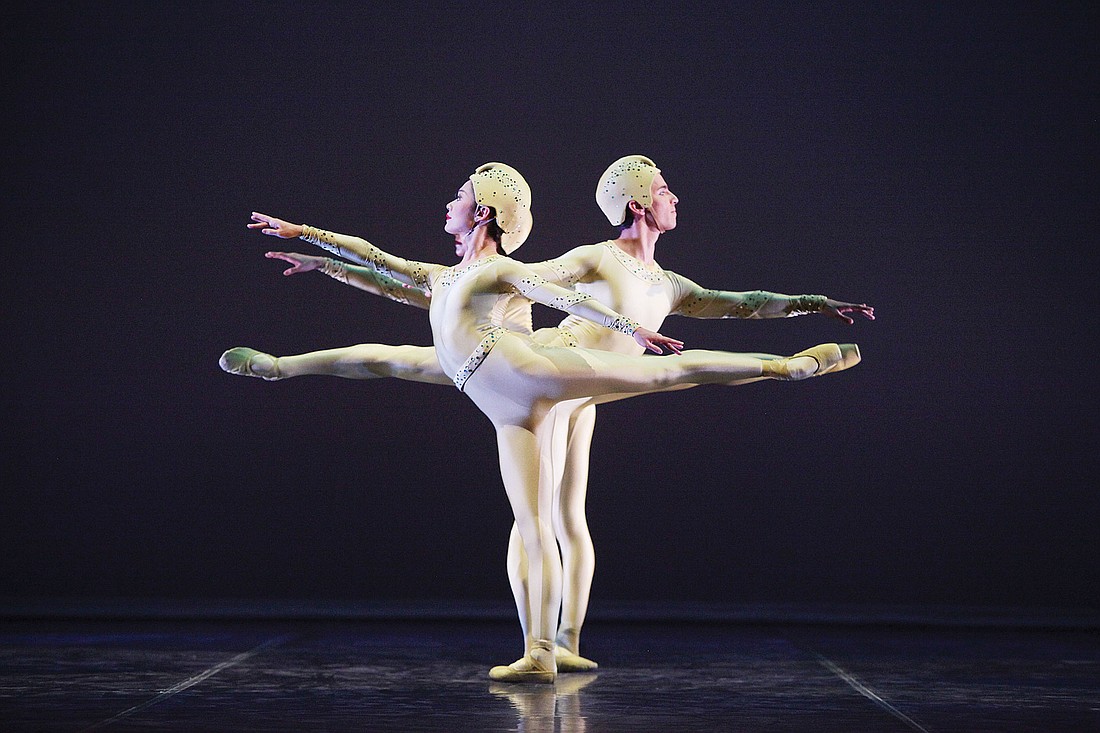- April 18, 2024
-
-
Loading

Loading

Sarasota Ballet’s February performances featured the choreography of Sir Frederick Ashton, director of the Royal Ballet and one of Britain’s most famed choreographers. The show included three different pieces of the choreographer: the classical “Valses Nobles et Sentimentales,” contemporary “Monotones 1 & 2” and the delightful comedy ballet, “Façade.” The three pieces displayed Ashton’s vast range of choreographic abilities and the dancing abilities of the Sarasota Ballet company, as well.
The evening began with a heartfelt video of Director Iain Webb reflecting on his memories of Ashton and Ashton’s influence on him as a dancer. Webb eloquently relayed how special this performance was to him and his wife, Margaret Barbieri. It was a nice, genuine touch.
“Valses Nobles et Sentimentales” was a beautiful, elegant ballet set to an interesting score by Maurice Ravel. Four couples led by a principal couple swooped onto a transparent, maroon screen-lined stage with the men twirling their ballet-pink, full-skirted partners in circling waltzes.
Principal Danielle Rae Brown danced the lead role with a pleasant look of ease and happiness, which was delightful to watch. When performing difficult tours de promenades en pointe in à la seconde that rotated to arabesque penchée, while supported by hand by Ricardo Graziano and Jamie Carter, Brown stayed in complete control.
Ashton’s “Monotones 1 & 2” set to music by Erik Satie, took the audience on a 180-degree spin to contemporary choreography from the late 1960s. Both “Monotones 1 & 2” had a cast of three dancers, but inverted: 1 featured two girls and one man; 2 featured two men and one girl. Each piece costumed the dancers in sleek unitards and matching helmet-type headpieces.
“Monotones 1” was a lyrical piece that featured slow adagio movements and the elongated extensions and lines of Ryoko Sadoshima and Rita Duclos with their male counterpart, Alex Harrison. Emily Dixon, who replaced Victoria Hulland due to an injury in “Monotones 2,” enthralled the audience with incredible tours de promenades en pointe in which her body was completely bent in half with her leg in développé devant touching her nose and the opposite in arabesque penchée. Both Dixon’s partners, Ricardo Graziano and Ricardo Rhodes, demonstrated great masculinity in their supporting roles.
Ashton’s “Façade” was the perfect end to the production, creating merriment for both the cast of dancers and the audience. Nicole Padilla, Caitlin Kirschenbaun and Simon Mummé were sprightly while performing petite allegro in Scotch Rhapsody. Kate Honea garnered guffaws from the audience while “milking” a pretend cow and performing promenades en pointe atop a tiny stool as the Milkmaid. Sara Sardelli, who also replaced Hulland, was simply sweet in the polka. Brown and Octavio Martin were over-the-top drama in the Tango-Pasodoble. But the real standouts in this year’s performance of “Façade” undoubtedly were Miguel Piquer and Ricki Bertoni in Popular Song. Dancing almost as Siamese twins, the two entwined their steps and jumps with deadpan humility.